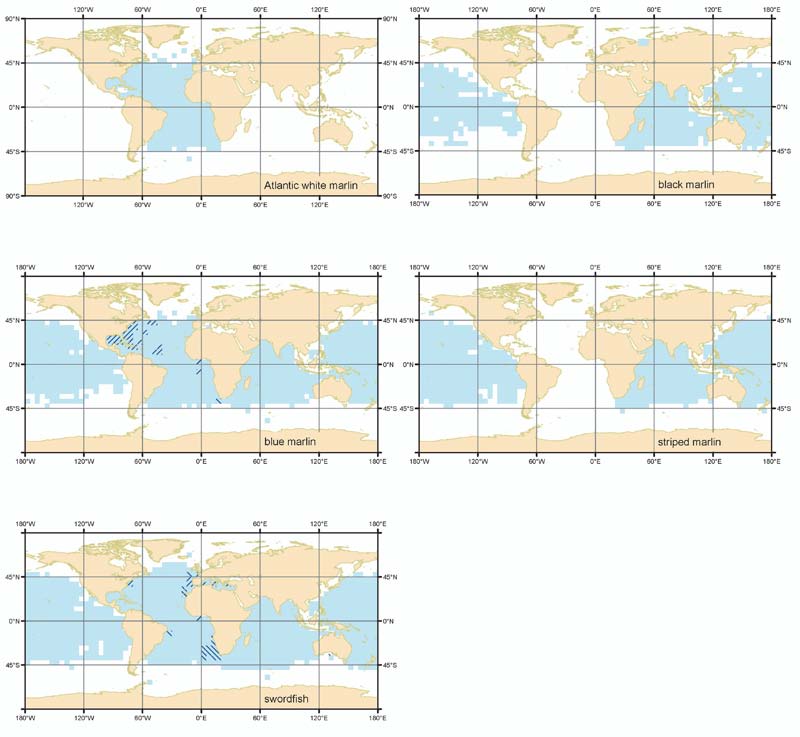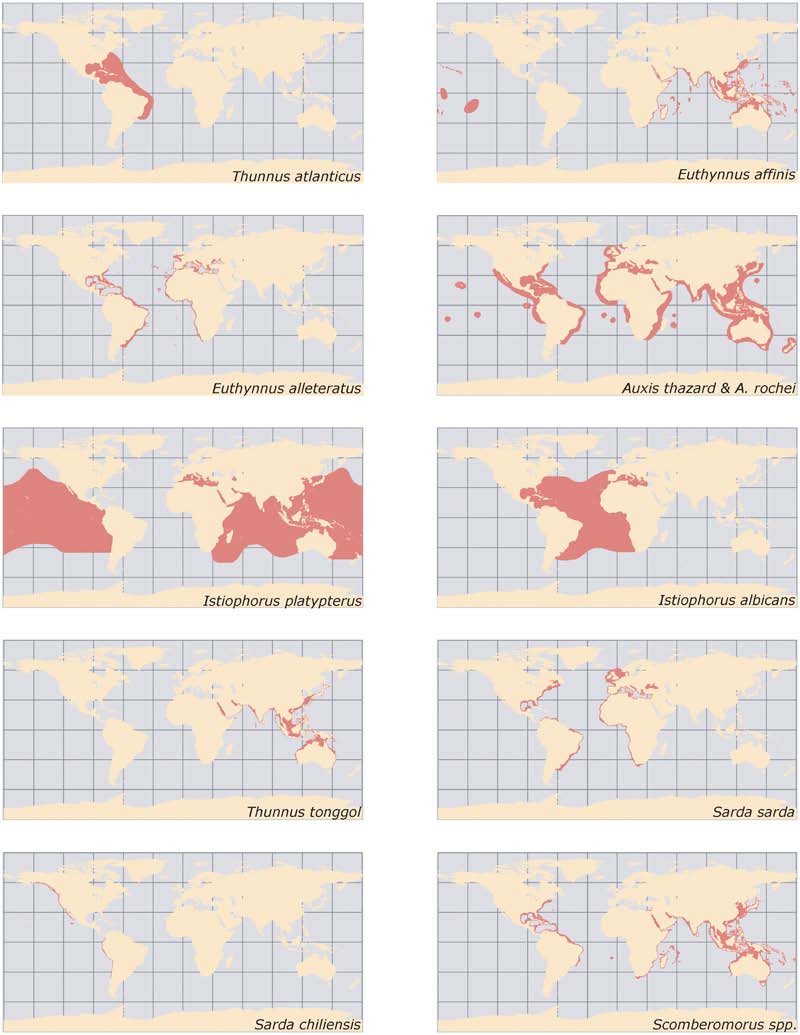STATUS OF WORLD TUNA PRODUCTION
(was compiled based on the FAO Global fishery resources of tuna and tuna-like species” (FAO Fisheries Technical Paper. No. 483)).
The suborder Scombroidei is usually referred to as tuna and tuna-like species (Klawe, 1977; Collette and Nauen, 1983; Nakamura, 1985). It is composed of tunas (sometimes referred to as true tunas), billfishes and other tuna-like species. It includes some of the largest and fastest fishes in the sea. The tunas (Thunnini) include the most economically important species referred to as the principal market tunas because of their global economic importance and the intensive international trade for canning and sashimi. In fact, the anatomy of some tuna species seems to have been purposely designed for loining and canning. Tunas are classified into four genera (Thunnus, Euthynnus, Katsuwonus and Auxis) with 15 species all together.
The principal market tunas from the genus Thunnus are albacore (T. alalunga), bigeye tuna (T. obesus), Atlantic bluefin tuna (T. thynnus), Pacific bluefin tuna (T. orientalis), Southern bluefin tuna (T. maccoyii) and yellowfin tuna (T. albacares). Skipjack tuna (Katsuwonus pelamis) is the seventh principal market tuna species.
As is evident from the geographic distribution of their catches (Figure 1), the principal market tunas are all oceanic, capable of long migrations or movements and constituting one or two stocks in each ocean. The exceptions are Atlantic and Pacific bluefins, which occur only in their eponymous oceans. Southern bluefin constitute a single stock extending in the Atlantic, Indian and Pacific Oceans.
The principal market tunas are frequently divided into tropical (bigeye, skipjack and yellowfin) and temperate (albacore and bluefin). However, this classification fails to describe precisely water temperature preferences in the case of bigeye, which are distributed throughout the tropics, but spends most time in the cooler waters near or within the thermocline, thus in more “temperature” waters like albacore when it ventures to lower latitudes.

Figure 1 Geographic areas where catches of principal tunas were taken from 1994 to 2004
The tunas that are not the principal market species are more neritic, i.e. living in water masses over the continental shelf. They include longtail tuna, blackfin tuna (T. atlanticus), black skipjack (Euthynnus lineatus), kawakawa (E. affinis), little tunny (E. alleteratus), bullet tuna (Auxis rochei) and frigate tuna (A. thazard).
The billfishes (Istiophoridae) are composed of marlins (Makaira spp.), sailfish (Istiophorus spp.), spearfish (Tetrapturus spp.) and swordfish (Xiphias gladius, the only species in the genus). With the exception of two species (Mediterranean and roundscale spearfish), all billfishes have wide geographic distributions as is evident from the distribution of catches (Figure 2). Not all species occur in all oceans. Billfishes are mostly caught by longlines as bycatches, except for swordfish which is targeted in certain regions using longlines and harpoons. Billfishes are also caught in sport fisheries, where they are greatly valued. They are all excellent seafood

Figure 2 Geographic areas where catches of billfishes were taken from 1994 to 2004
Other important tuna-like species include slender tuna (Allothunnus fallai), butterfly kingfish (Gasterochisma melampus), wahoo (Acanthocybium solandri), bonitos (Cybiosarda, Orcynopsis and Sarda), Spanish and king mackerels, seerfish and sierra (Scomberomorus spp.). Their geographic distribution is given in Collette and Nauen (1983, Figure 3). These important species provide significant potential especially for developing countries where they are mostly caught in artisanal and recreational fisheries. Slender tuna and butterfly kingfish (with a circumpolar distribution in the Southern Ocean) are now caught mainly as by-catches of the Japanese longline fishery targeting southern bluefin tuna.

Figure 3 Distribution of billfishes and some small tunas for which there are no detailed data on locations of their catches
Source of information
Klawe, W.L. 1977. What is a tuna? Marine Fisheries Review, 11(39): 1–5. User Service Branch, Environmental Science Information Center, National Oceanic & Atmospheric Administration (NOAA), Rockville, MD20852, United States.
Collette, B.B. & Nauen, C.E. 1983. FAO species catalogue. Vol. 2. Scombrids of the world. An annotated and illustrated catalogue of tunas, mackerels, bonitos and related species known to date . FAO Fisheries Synopsis 125(2). 137 pp.
Nakamura, I. 1985. FAO species catalogue. Vol. 5. Billfishes of the world. An annotated and illustrated catalogue of marlins, sailfishes, spearfishes and swordfishes known to date.


